What motivates you to go on a hike? For some, it’s the passion of being immersed in nature, while others enjoy the challenge and the feeling of fresh air on their faces. If you tend to err on the side of caution, however, there are certain hikes you might want to avoid.
A hike can be dangerous because of several factors, such as remote locations, complex navigation, and extreme weather conditions. It’s also important to consider the history of injuries and accidents on a trail.
To steer you clear of risky climbs, we’ve identified some of the most hazardous hikes in the United States. Here are the trails you may have to think twice about before you attempt them.
1. Angel’s Landing in Zion National Park (Utah)
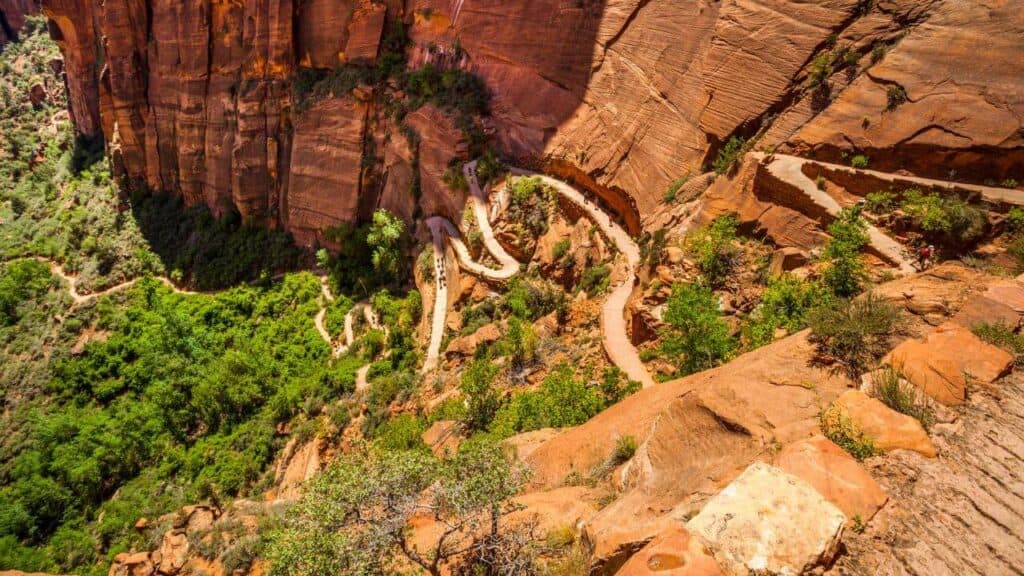
Angel’s Landing in Zion National Park, Utah, poses a serious threat to many hikers due to its dizzying 1,000-foot (304.8-meter) drop. It begins deceptively easy, lulling beginners into a false sense of security. However, the trail features extremely narrow paths in unexpected places that can catch hikers off-guard or make them feel trapped.
Since 2000, there have been at least 13 fatalities on Angel’s Landing, especially in the final half of the climb. Besides the narrow trail, human traffic jams and slippery sandstone contribute to the danger. Even with bolted chains as handholds, going through the exposed ridge can be nerve-wracking.
2. Kalalau Trail (Kauai, Hawaii)
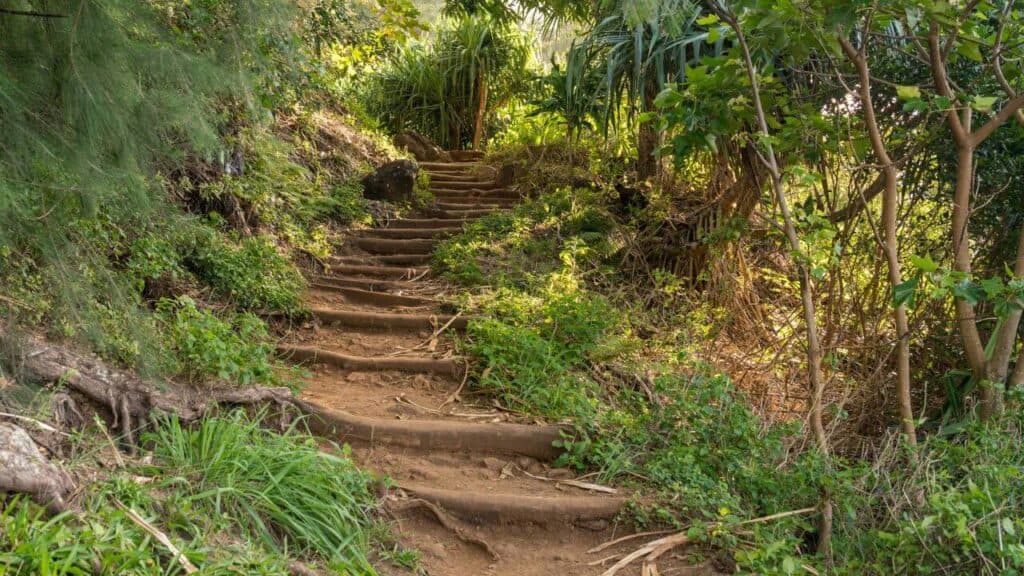
In Hawaii, the Kalalau Trail offers an exciting challenge to daredevil hikers on the Na Pali Coast. The 11-mile (18 km) trail surrounds the northwest part of the island, which is quite remote but provides stunning sights.
The Kalalau Trail is one of the most dangerous hikes in the U.S. because of the ever-changing and unpredictable weather. Hikers may also encounter flash floods, with six stream crossings along the trail. Access to emergency services is limited since boats and helicopters are not allowed on Kalalau Beach.
3. The Mist Trail in Yosemite (California)
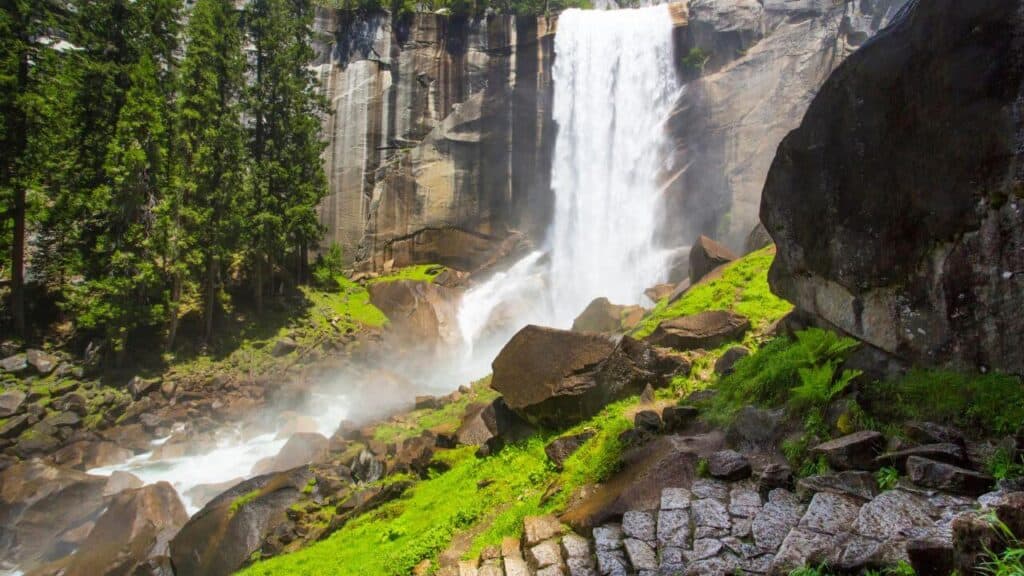
Yosemite’s The Mist Trail is a hike that many daredevils are eager to undertake. It starts in the Yosemite Valley, covers 14.2 miles (23 km), and ascends 4,800 feet (1,463 meters) to the peak of Half Dome. The steep trail typically takes hikers 10 to 12 hours round-trip.
Unlike some dangerous hikes, The Mist Trail doesn’t deceive — it’s clear from the start that it will be a difficult climb. The challenge intensifies as you pass Vernal Falls and climb the granite stairs while being sprayed with water.
4. Presidential Traverse in Mount Washington (New Hampshire)
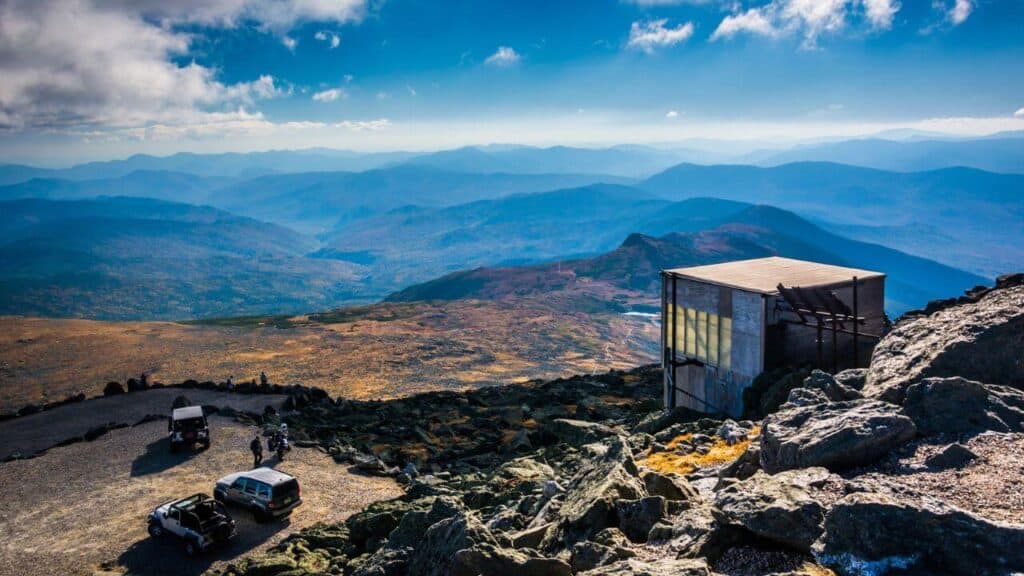
In Mount Washington, hikers consider the Presidential Traverse to be one of the most dangerous routes. This 20.4-mile (33 km) route has seen many tragic falls.
Mount Washington’s location makes it vulnerable to sudden and deadly weather changes. It is notorious for extreme conditions, including 231 mph winds and up to 4 feet (1.2 meters) of snow, which can lead to a hiker’s downfall.
5. The Maze in Canyonlands National Park (Utah)
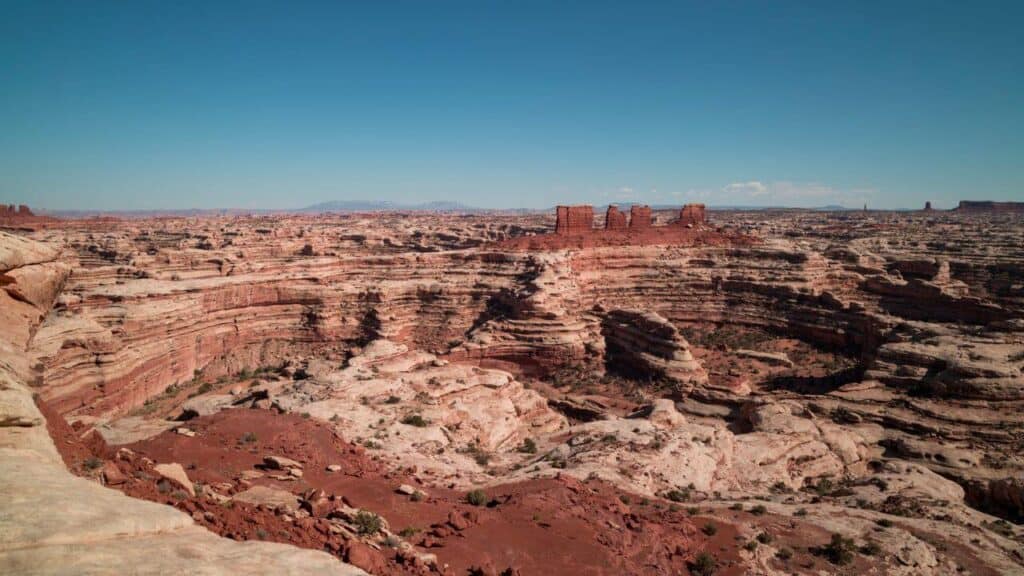
Canyonlands National Park houses The Maze, a complex weave of red rocks in which anyone can get lost. While it’s not as dangerous as trails with risks of slipping and falling, the danger of dehydration and getting lost without help is very real.
Temperatures can exceed 110 degrees Fahrenheit (43 degrees Celsius) in the Maze, and its remote location makes it deadly if you get lost. A wrong turn can leave you stranded for days.
6. Capitol Peak Through the Knife Edge (Colorado)
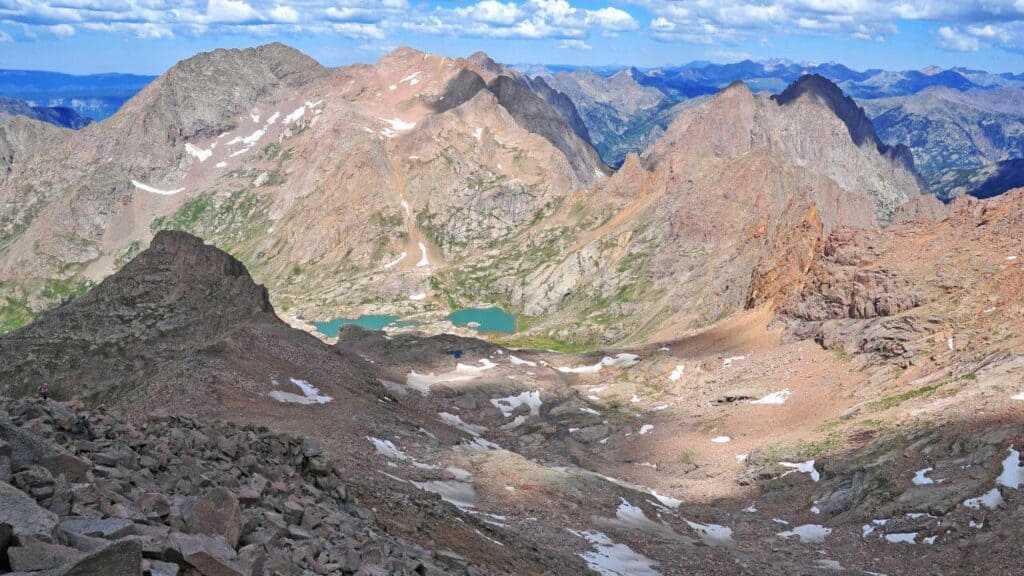
Located in the Elk Range near Aspen in the Rocky Mountains, Colorado’s Capitol Peak is notoriously dangerous due to its exposed trail. At first, it seems like a classic mountain hike, but it has sections that can intimidate even pro mountaineers, such as the Knife Edge.
This danger zone features a terrifyingly narrow granite rock that stretches 150 feet (45.7 meters) long. A fall from here could send you plummeting 1,000 feet (304.8 meters). Even experienced climbers must use their hands to navigate this trail.
7. Huckleberry Trail in Glacier National Park (Montana)
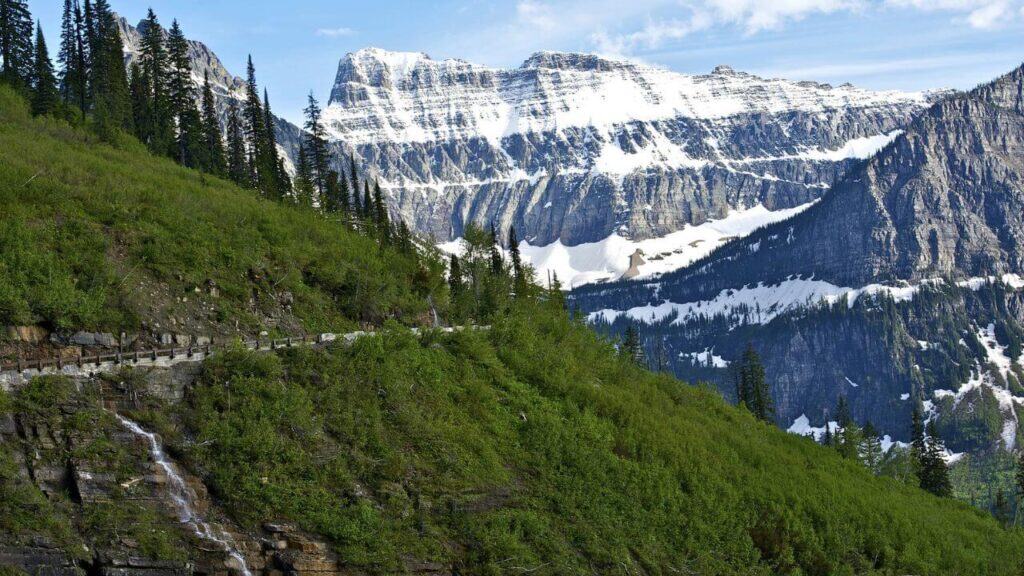
The Huckleberry Trail in Glacier National Park is dangerous due to its high grizzly bear population. If you trek this trail, take necessary safety precautions and know what to do if you encounter a bear.
Glacier National Park is home to approximately 563 bears, many of which frequent the Huckleberry Trail and Mountain. The National Park Service has had to close the trail at times to protect hikers. If you decide to traverse the trail, make sure you have bear spray.
8. Bright Angel Trail in Grand Canyon National Park (Arizona)
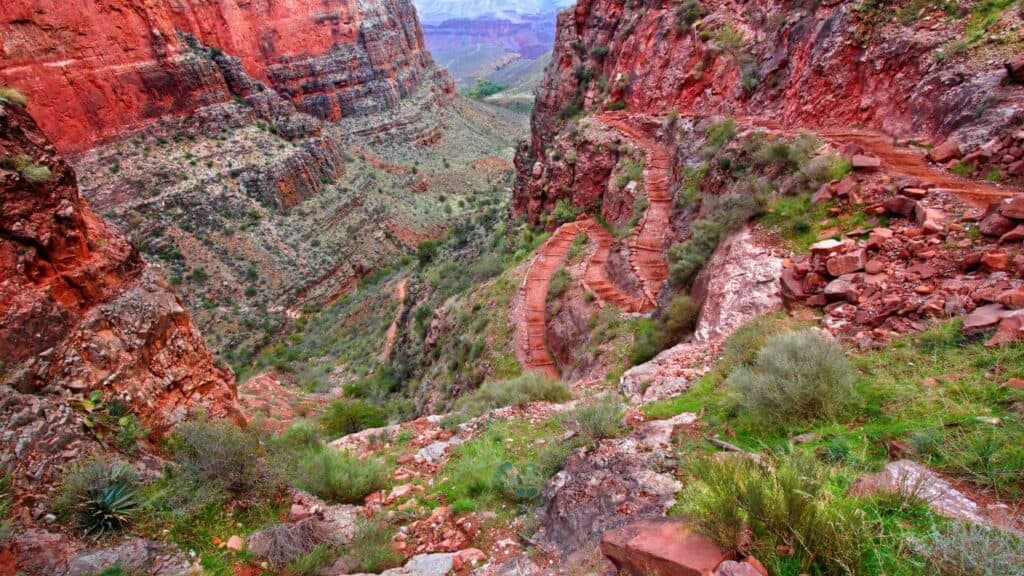
Arizona is known for the Grand Canyon National Park, and its Bright Angel Trail is an infamous route for hikers. It’s not steep, exposed, or high, and you can easily find your way. However, the danger lies in the weather.
Hikers who meet their end on Bright Angel Train often suffer from dehydration and heat stroke. Make sure to stay hydrated and bring enough water for the entire hike. Ranger stations are available at Indian Garden and Phantom Ranch, so refill your water there.
9. Camp Muir in Mount Rainier National Park (Washington)
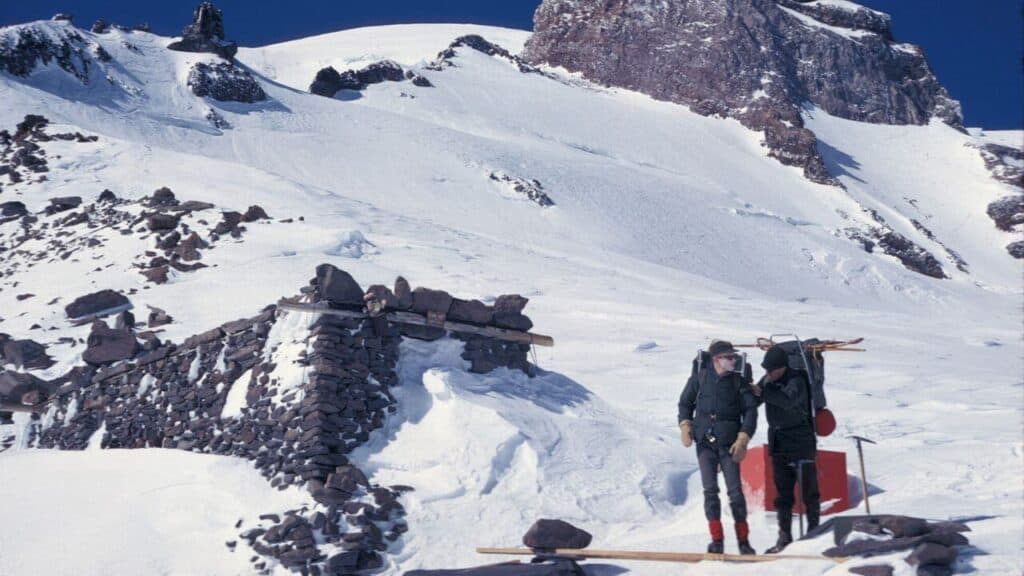
Camp Muir is in Mount Rainier National Park and is known for claiming lives. Hikers often get trapped in blizzards and snowstorms on the way to Camp Muir, particularly on Muir Snowfield.
In Muir Snowfield, you’ll need to trek 2.2 miles (3.5 km) through a vast white field of snow. If you know your way, it’s a safe route, but if you’re unfamiliar with the terrain and veer too far left or right, you might leave the safe paths.
10. Spooky Gulch (Utah)
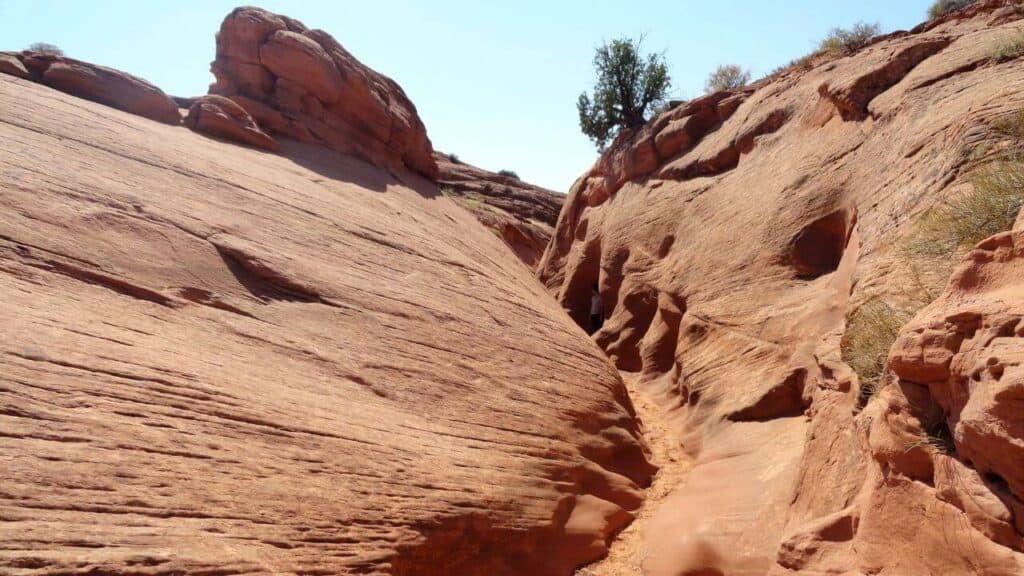
Utah’s Spooky Gulch has an unusual name that hints at the claustrophobia you may experience there. You can reach the area after passing through Dry Fork Gulch and Peek-a-Boo Canyon, which are challenging on their own.
Spooky Gulch has a distinguishable large entryway that becomes narrow, requiring you to squeeze through. While it seems fun, the dangerous part of this adventure is its remoteness and the risk of flash floods, which can trap and endanger hikers.
11. The Haiku Stairs in Oahu (Hawaii)
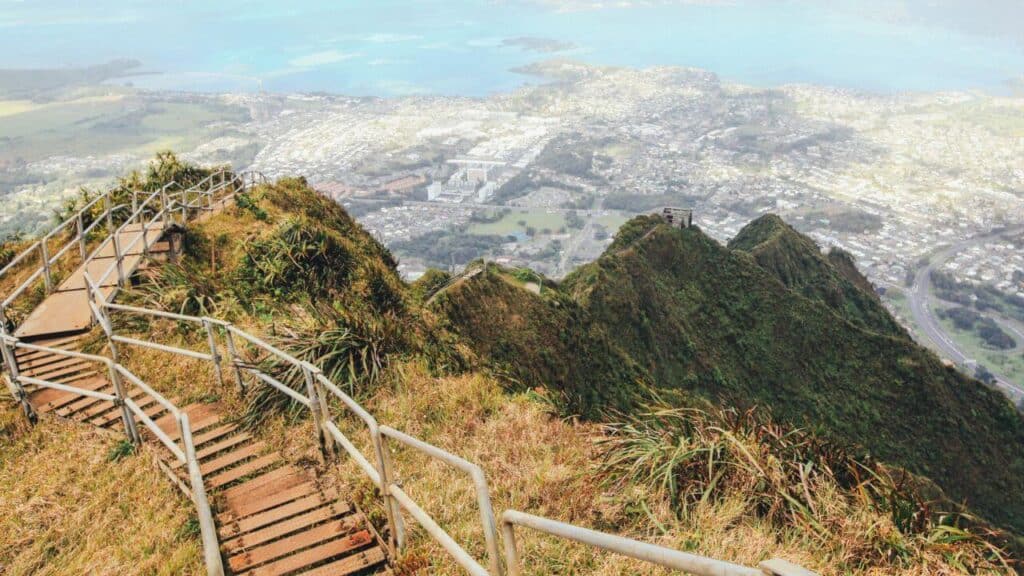
Hawaii’s Haiku Stairs is the deadliest trail in the state, worthy of its moniker “The Stairway to Heaven.” Originally, the stairs were made to support World War II military communication through the radio tower. Due to their decaying condition, the 3,922 stairs have been closed since 1987.
Before it was closed down, hikers enjoyed stunning views of the landscape below. However, if you try to climb the stairs today, you will be fined $600.
12. Chinitna Bay in Lake Clark National Park (Alaska)
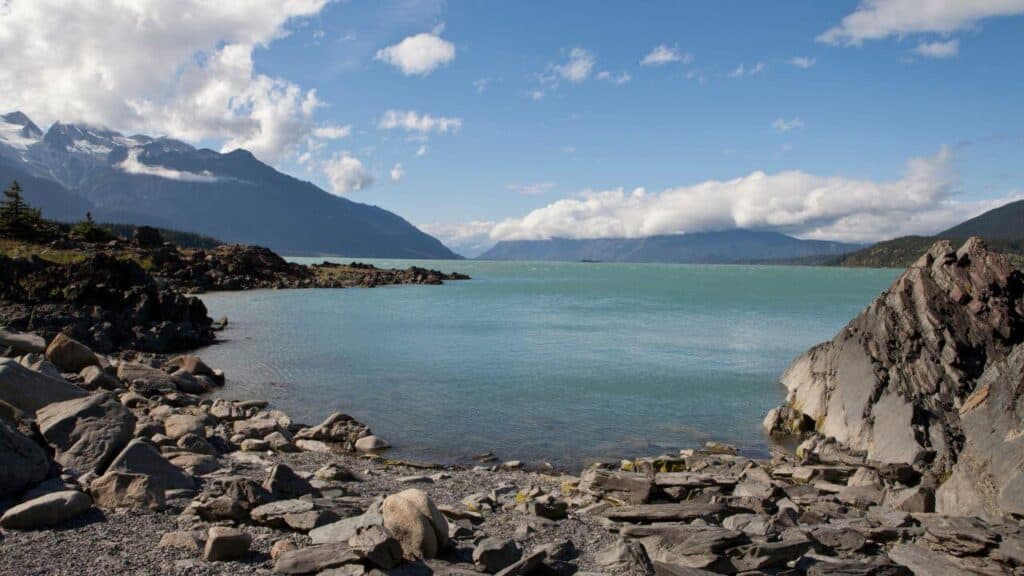
The Chinitna Bay, located in Lake Clark National Park, has a reputation similar to the Huckleberry Trail in Montana’s Glacier National Park. If you don’t mind the chance of running into grizzly bears, Chinitna Bay is the place to hike.
Besides the danger of encountering bears, the trail in Chinitna Bay offers stunning views, especially during late summer or early fall. You can enjoy hiking and being in nature safely as long as you have your bear spray and canister.
13. Devil’s Bridge (Arizona)
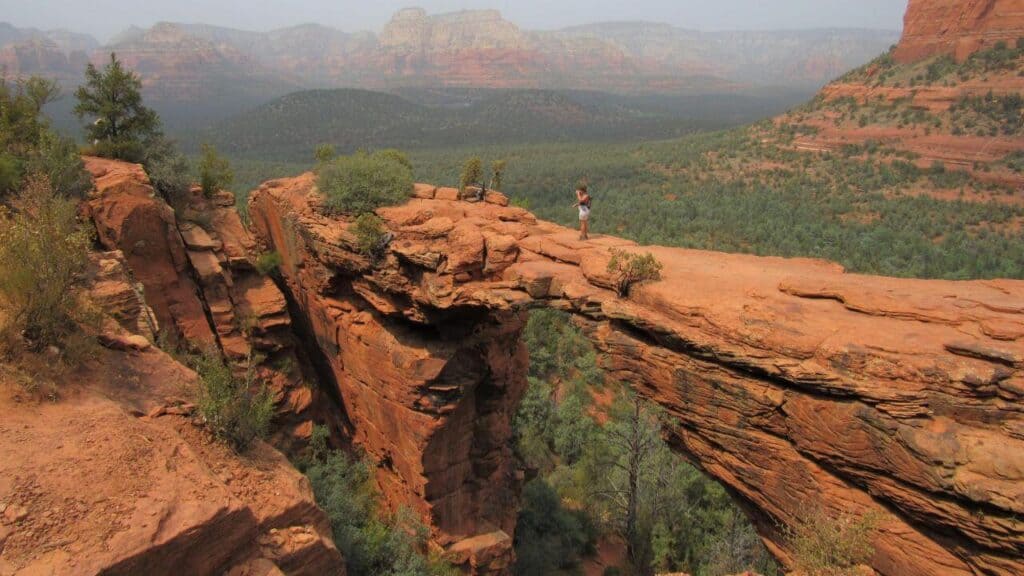
Devil’s Bridge in Sedona offers hikers an exciting challenge amidst the high chances of dehydration and heat stroke. It got its name because of the terrifying drop waiting for hikers who make a wrong step.
Considered Sedona’s biggest sandstone arch, the Devil’s Bridge offers a stunning sight that makes tourists want to capture the moment. If you’re trying out this adventure, be prepared to stand in line. To avoid the crowd, you can come early in the morning or before sunset.
14. Maroon Bells in South Ridge (Colorado)
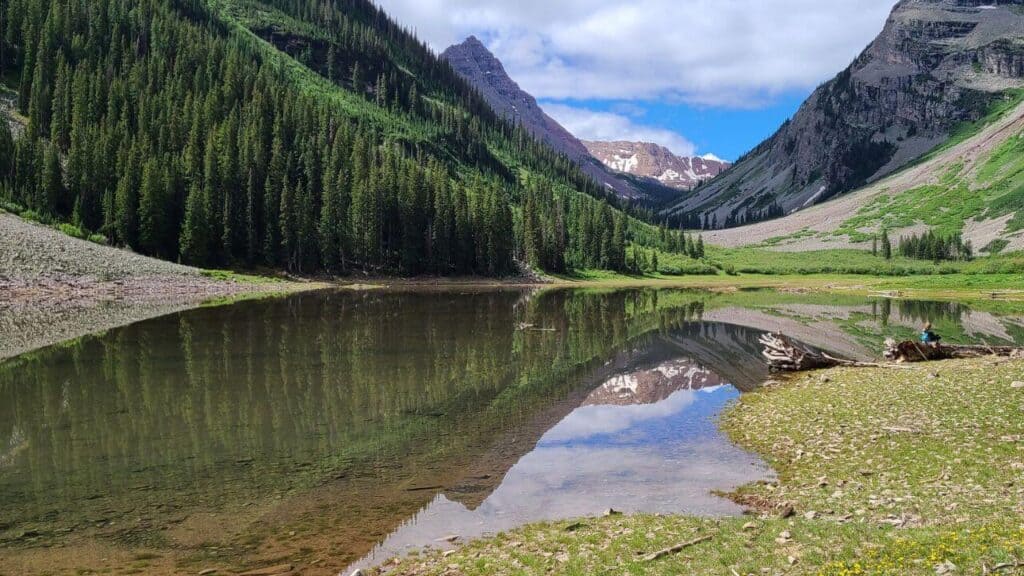
Colorado’s South Ridge is home to Maroon Bells, a deceptive trail you won’t notice has tricked you until you are 11,000 feet (3,352 meters) high. After this point, the trail becomes more dangerous and is considered one of the most challenging hikes in the country.
Maroon Bells features a sign warning hikers about the deceptive climb. It may not be technically difficult, but unstable and loose-sloping terrain can make you more unstable than you would anticipate.
15. Koko Head Stairs (Hawaii)
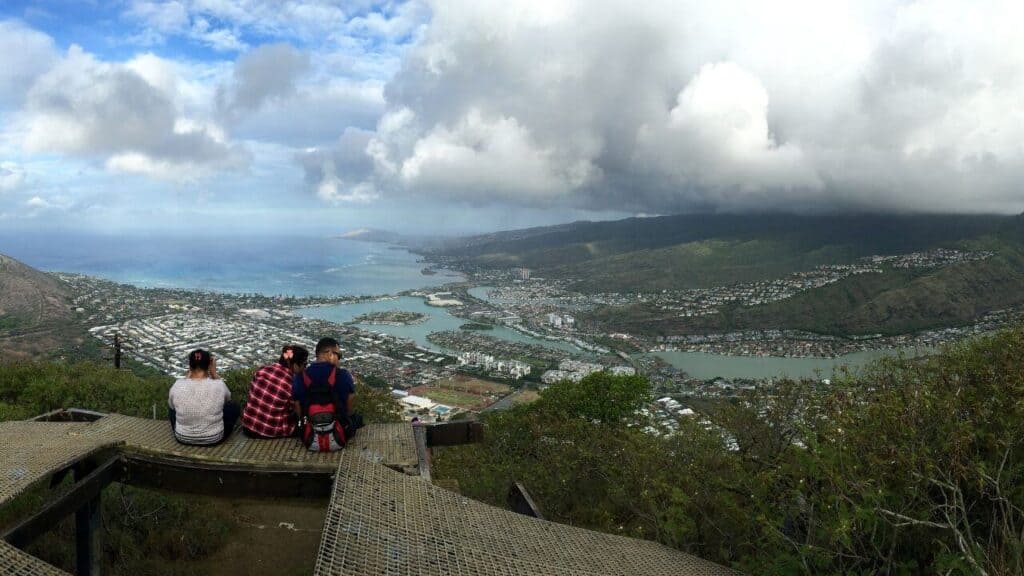
Koko Head Stairs in Oahu, Hawaii, is a relatively dangerous trail where you can experience heat stroke and dehydration. The Hawaiian trail is the “safer” alternative hikers choose after the deadly Haiku Stairs however, slipping or falling is still very possible.
Koko Head Stairs have an incredible back story to them: they were originally made to help deliver items to the Air Force Station during World War II. Today, the 1,050 steps are a challenge to hikers since the trail features wide steps, high inclines, and no handrails or rest steps to help hikers along.
16. Jack Mountain in North Cascades National Park (Washington)
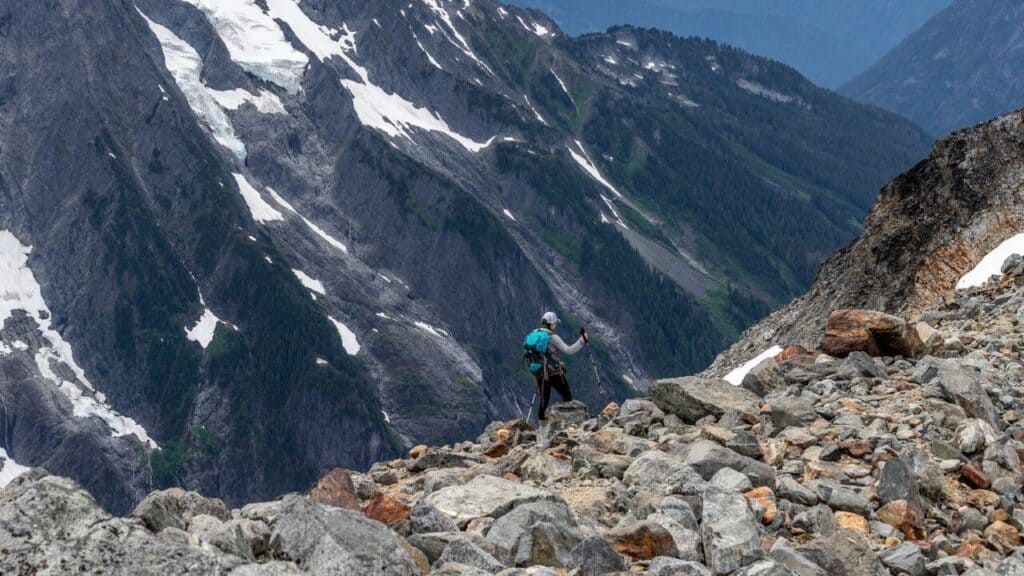
The North Cascades National Park is the home of Jack Mountain, which is a popular yet dangerous route in Washington. The menacing route can be seen when you traverse the North Cascades Highway.
The route features loose rocks and year-round snow that can make hiking more difficult. If you don’t have the appropriate gear or the necessary alpine experience, skip this location and choose a different trail to hike.
17. Barr Trail in Pikes Peak (Colorado)
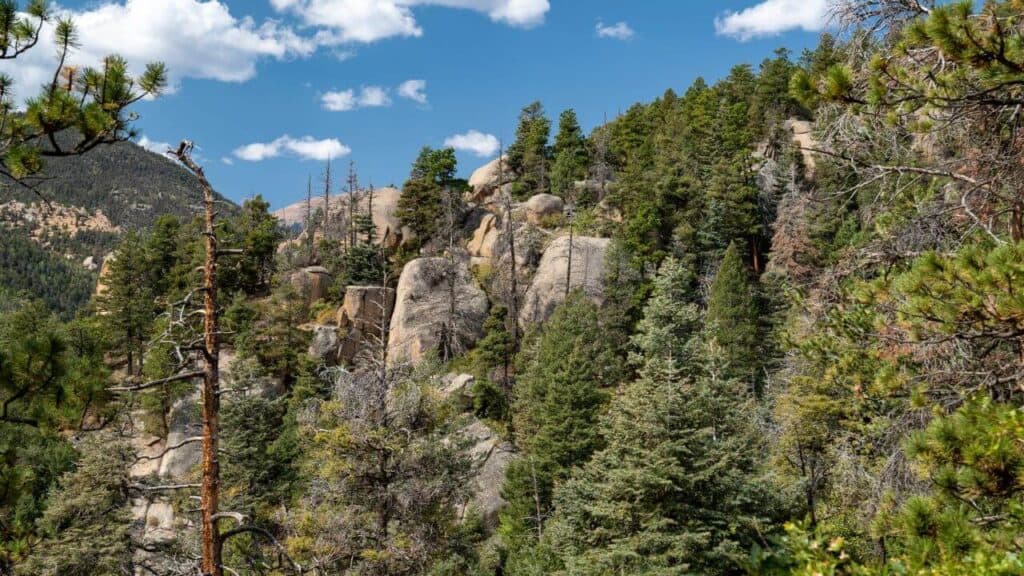
Colorado’s Pikes Peak has the Barr Trail, one of the most dangerous hikes in the United States because of its unique relationship with the weather. Standing 14,115 feet high (4,302 meters), Pikes Peak is the state’s tallest mountain and is not a stranger to afternoon thunderstorms and high lightning activity.
The 13-mile (21 km) Barr Trail is a dangerous temptation for hikers because of its staggering 7,400 feet (2,256 meters) in elevation gain. The trail is above the tree line, making it prone to lightning strikes.
18. Denali in Denali National Park (Alaska)
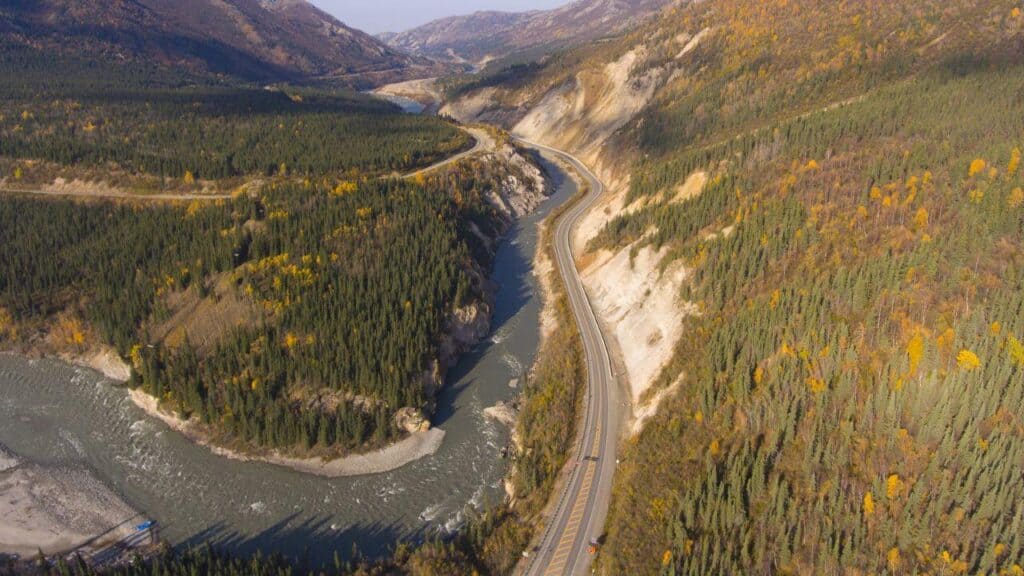
Formerly known as Mount McKinley, Denali has rough terrain fitting for the highest mountain in North America. Because of its height, it challenges professional hikers and mountaineers.
Out of all the individuals who tried the might of Denali, only 53% were able to reach the summit. The others failed, and about 100 of those who failed became fatalities along the way.
19. Mountaineer’s Route in Mount Whitney (California)
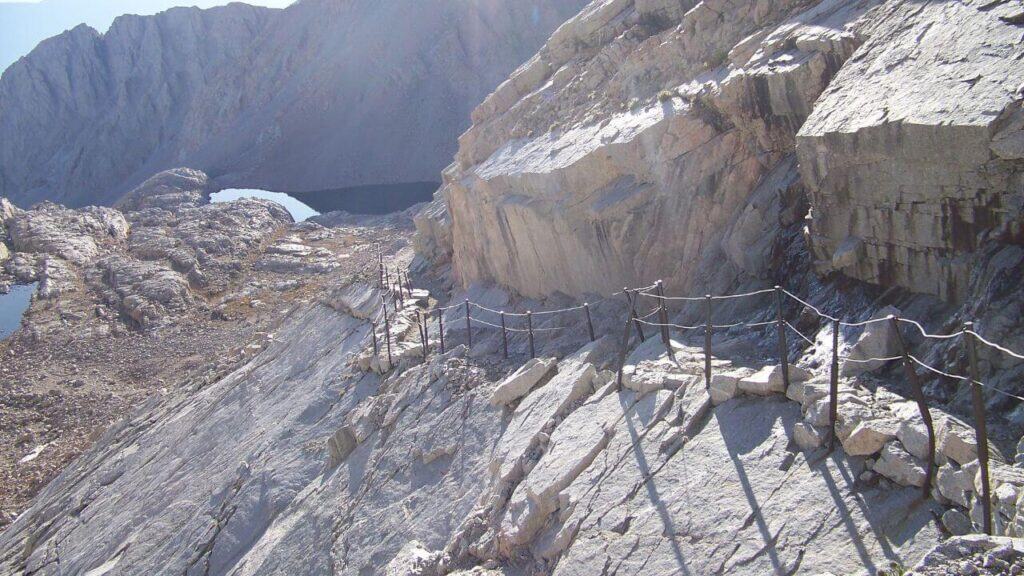
The Mountaineer’s Route in California’s Mount Whitney is another challenging climb because of its height. While some consider it relatively safe, others get sick because of the altitude, which can be dangerous mid-climb.
The most difficult part of the trail is the steep 5-mile (8 km) long route. Some people have already fallen victim to this tricky part of the hike.
18 Most Dangerous Places in the World
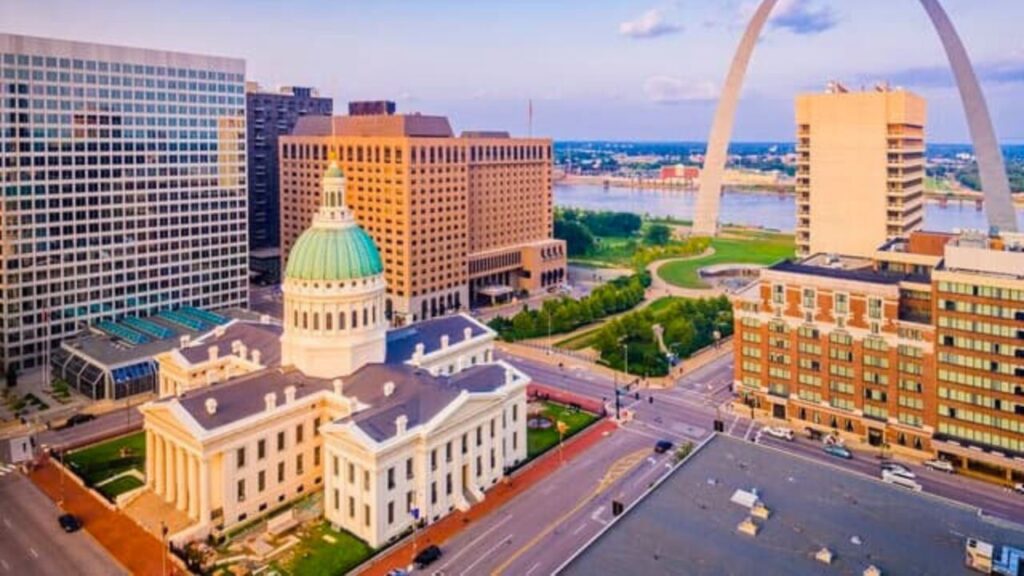
Traveling around the world seems like a dream come true, but not if your destination is one of the world’s most dangerous places. Before you randomly pick a vacation spot, find out if you can safely go back home after the trip.
20 Most Beautiful Cities in Europe To Visit at Least Once

The world is full of beautiful cities, and Europe is the home to many of those. From Paris to Rome, exploring Europe will always surprise you with wonder and charm. However, with more than 800 European cities, it can be hard to explore them all.
Don’t worry, we’re here to help you out. We’ve put together a list of the most beautiful cities in Europe that you can’t miss.
MSN Writer, Radical FIRE
Expertise: Entertainment, Travel, Interior Design, and Personal Improvement Niches
Education: Bachelor of Science in Tourism, Major in Development Tourism Management at Ateneo de Naga University
Experience: Marisa Bolivar is a content writer with 10 years of experience in creating blogs and articles across different industries on the web. She has explored many niches in her years working as a content specialist with her favorite zeroing on entertainment, from books to movies and TV shows. Marisa is also a bookworm, who has a fondness for personal improvement and philosophical authors like Paulo Coelho and Mitch Albom.

